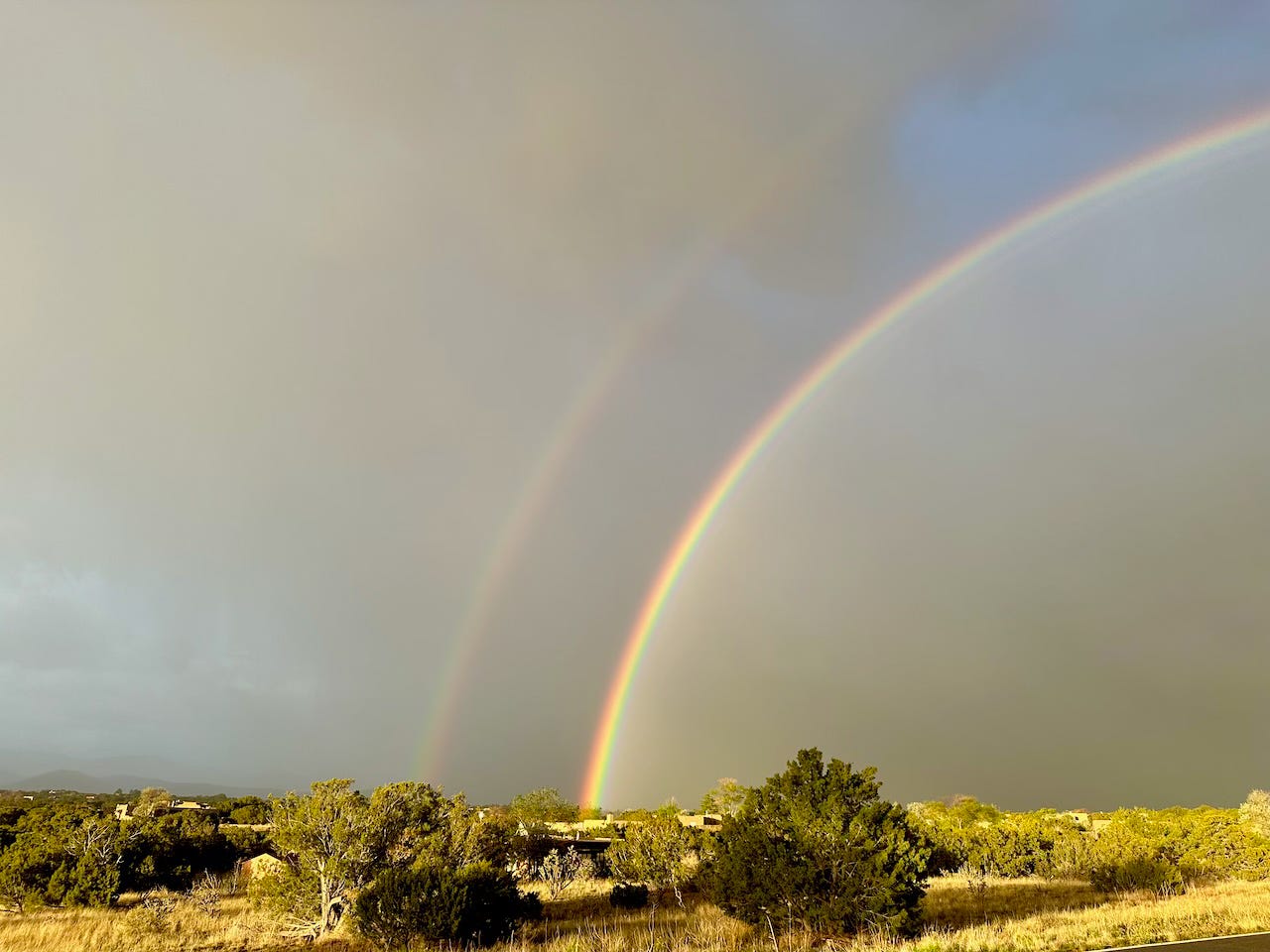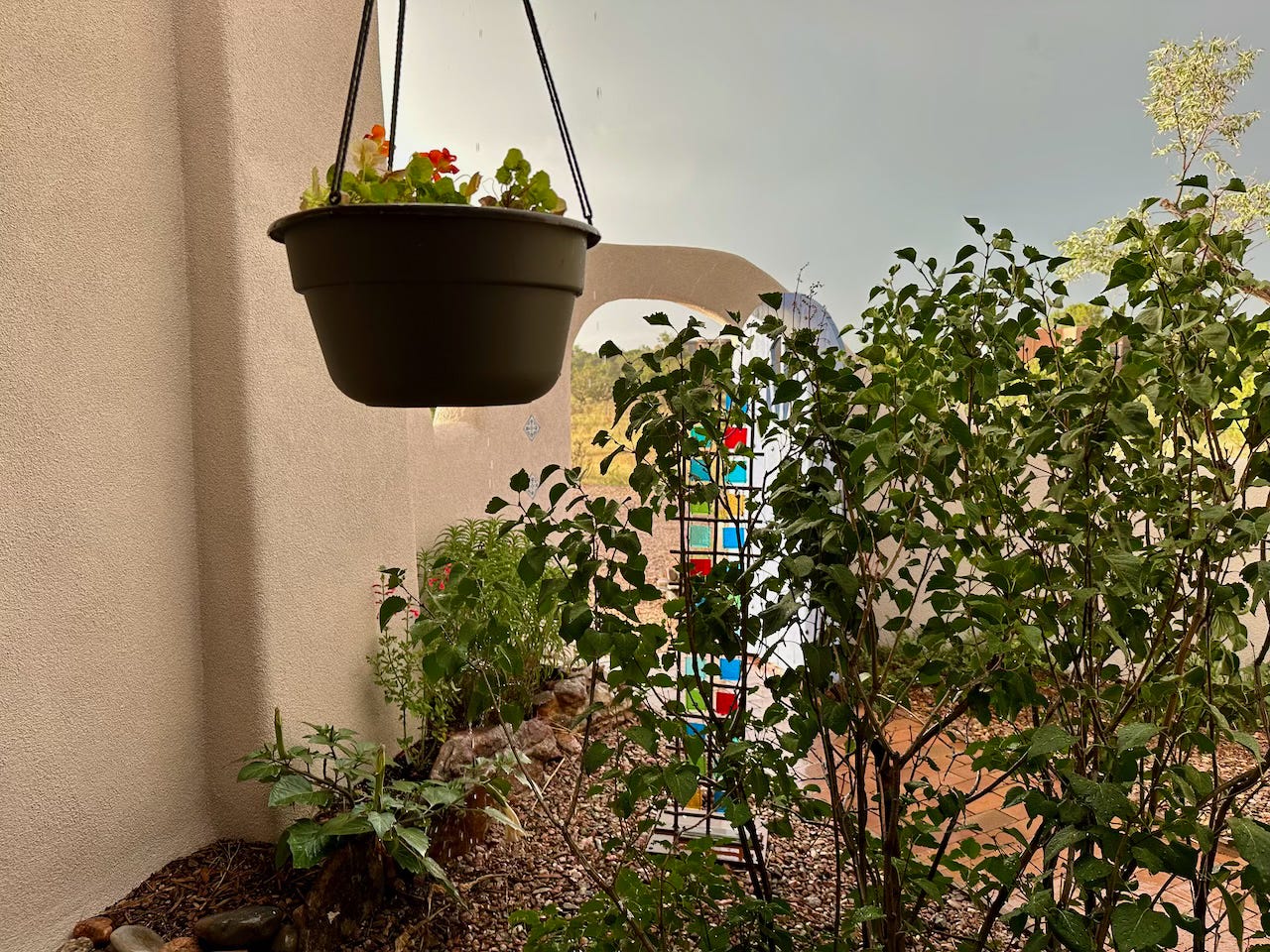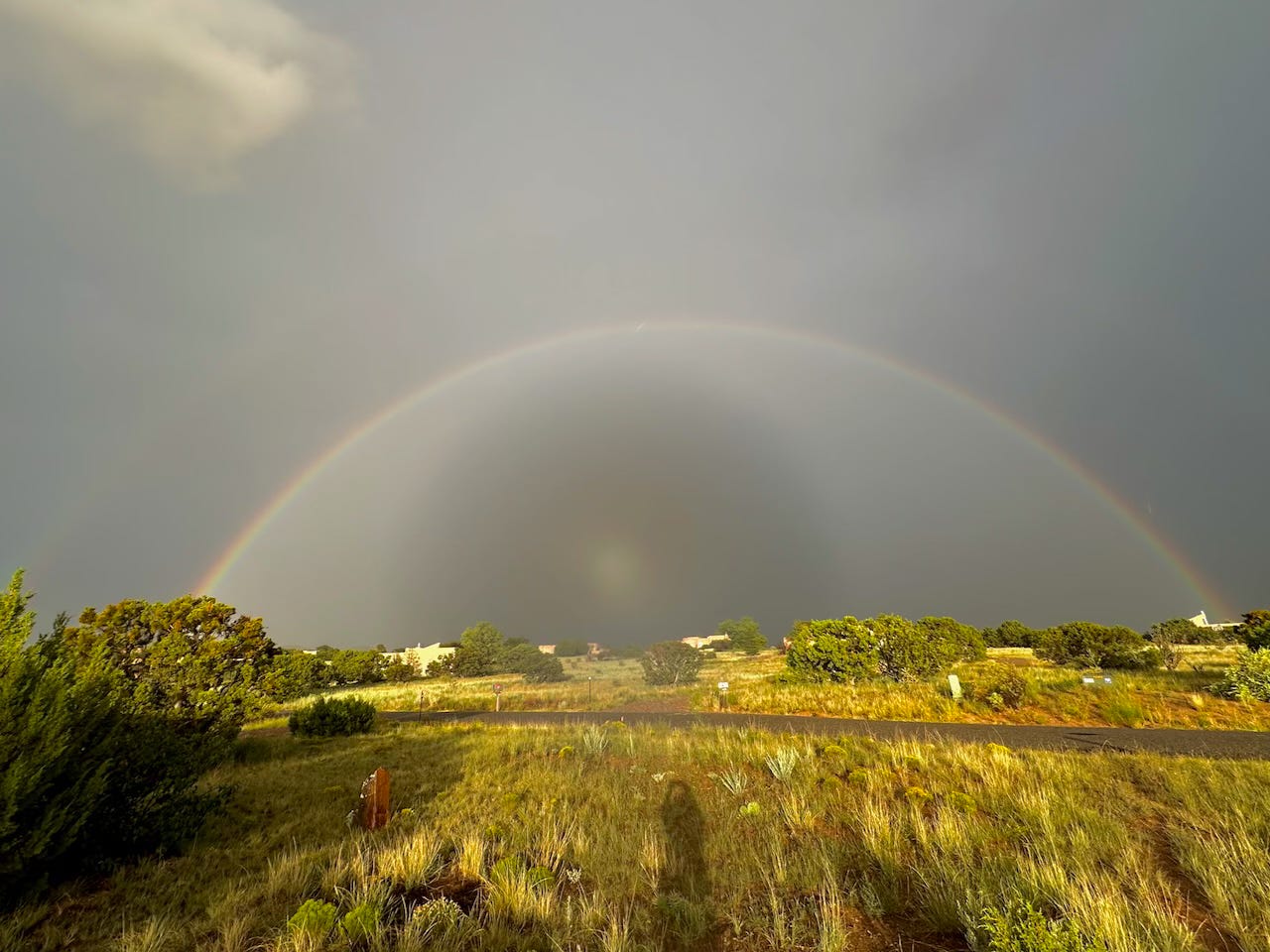prismatic raindrops split sunset into color arcs brilliant showers
How can a rainbow hold still when the raindrops, the individual prisms that split while light into component color-waves, are falling? Violet-blue-green-yellow-orange-red cups my neighborhood in beauty.
Hello Friends! Today I’m grateful for rainbows and rain, both of which are rare and precious in the arid high desert where I live.
The rain started last night at around five o’clock with the rumble of thunder in the distance, and cold gusts sweeping past from the distant cloud.
As the storm moved closer, those gusts wafted the earthy fragrance of petrichor, the smell of minerals and plant compounds splashed into the air by the impact of water droplets.
Then came the rain itself, first a few drops, then a pause, and another few drops. A stab of lightning hit somewhere nearby, followed almost instantly by a “Crack!” of thunder as the air, superheated by the immense electrical charge, expanded dramatically.
The rain began to pour down, setting the canales, roof spouts that drain my flat roof, to singing with the music of falling water. The air blowing in the open windows was moist and 20 degrees F cooler than it had been just half an hour before the thunderstorm cloud moved over.
After a few minutes, that shower tapered off. I was afraid the rain was all over, but no. Ten minutes later, another shower moved in, “walking on legs of lightning” as the Navajo say. The rain started and stopped, started and stopped, accompanied by flashes of lightning and booming thunder.
Finally, at sunset, the showers settled into steady rain just as rays of light slid under the cloud-bottom. I raced outside and looked east—away from the sunset—to see if there was sufficient light and rain to form a rainbow. There was! (Hence the photo at the top of the post, a wide-angle view of the rainbow with a faint secondary bow visible, especially on the left side.)
The physics of rainbow formation are simple, but really, really cool. Each droplet acts like a prism, splitting the white light into individual wavelengths as the light enters the droplet. That’s the refraction part. Then those wavelengths are reflected off of the curving back surface of the raindrop, reversing the order of the wavelengths. In a primary rainbow like the main one in the photo, the light is refracted again as it exits the water droplet.
All of that happens in a nanosecond, of course, as the droplet is falling through the air and intersecting the light. What our eyes see is an arc of colored bands from the light wavelengths (or from an airplane above the light rays and water droplets, a whole circle).
In a primary rainbow, the bands are ordered from the shortest visible wavelengths—violet—on the inside of the arc, to longest—red—on the outside. (The difference in length of the waves is what forms the curve of the arc or circle.) In the secondary rainbow, the colors are reversed, because the light waves are reflected both going into the water droplet and leaving.

To me the most amazing part is that it all happens in an instant as the raindrops are falling.
The rainbow is stationary as long as the light rays are stationary, and the brightness of the visible light wavelengths depends at least partly on the brightness of the light. The width of the bands of color depends partly on the angle of the sun and partly on the amount and size of the water droplets in the air. No two rainbows are likely to appear the same because the variables that create them can change dramatically from moment to moment as well as day to day.
In this year of little rain, both rainbows and rain have been scarcer than what used to be “normal.” (Before climate change, that is.)
Last night’s rain tapered to a gentle patter after the sun set, and continued long into the night.

The rain gauge readings in my area on the Community Collaborative Rain, Hail & Snow Network—which, by the way, is an amazing example of community science—cluster around 0.8 inches for last night’s rain. Not an impressive total for those who live in places where rain is a regular occurrence, but for this high-desert landscape, with total annual precipitation averaging around 10 inches, a significant amount.
Today the prairie grasses have turned from straw to pale green as they come out of drought-induced dormancy and make green pigments with which to capture the energy in sunlight, the cactus pads have plumped up again, and the air smells deliciously moist and full of life.
For a few weeks, the high desert plants and animals will party hearty, celebrating the return of rain and life.
And for that, I am very, very grateful.
Blessings to you all, Susan





The smell of rain in the desert
The rise of the wind before the storm
And then the clatter of drops falling on the rocks
Water washing the landscape
Thunder coming closer, attending the flash of lightning
The storm ending with running water in the canyons
The rainbow after the storm
I had never realized the colors are reversed in a second rainbow! I love learning new things!